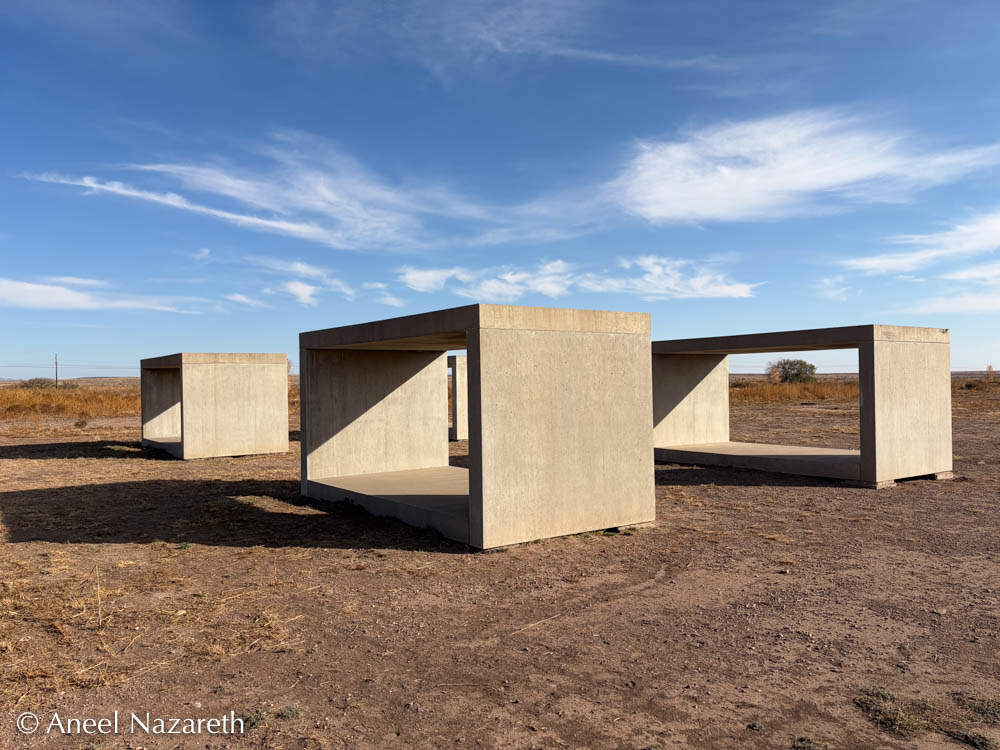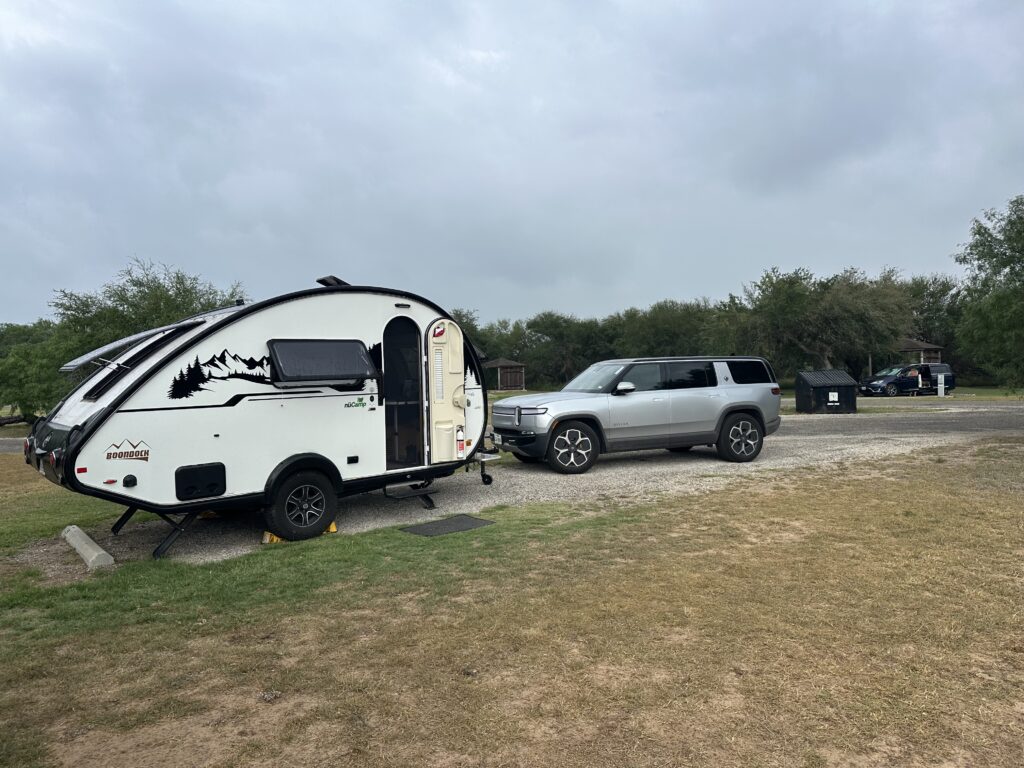As you can probably tell from the pictures, the Tourtoise isn’t a giant RV. It’s definitely big enough to have all the necessities (toilet and warm shower for the win!), but small enough that I still want to spend as much time outdoors as possible—I mean that’s why we go camping right? This means the kitchen is pretty compact.
Kitchen Layout
The kitchen has a small circular sink—sometimes annoying if we’re trying to wash something bigger like a skillet—a 4.6 cu. foot fridge, a two-burner stove, counter space for a dish drying rack, and counter space for a small cutting board and prep station. Usually, when I’m cooking, I also put the glass cover of the sink down so I get a bit more prep space. Occasionally, I have to use the table as a little overflow, but usually only to stage the prepped meals as I’m putting the last finishing touches on.
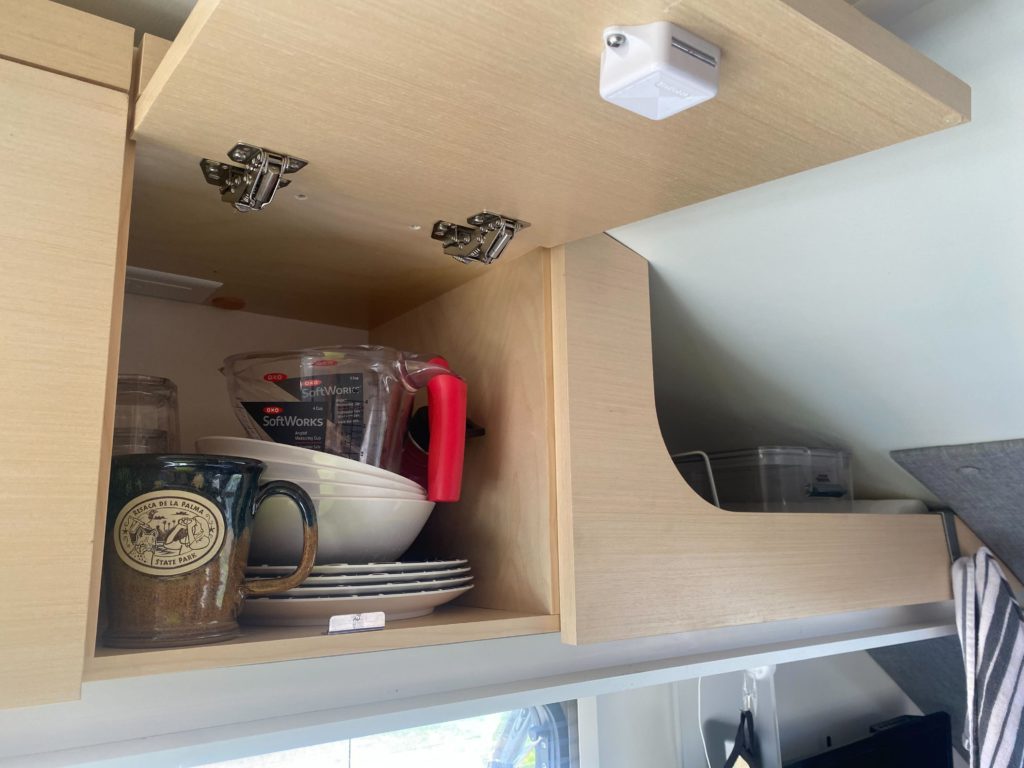
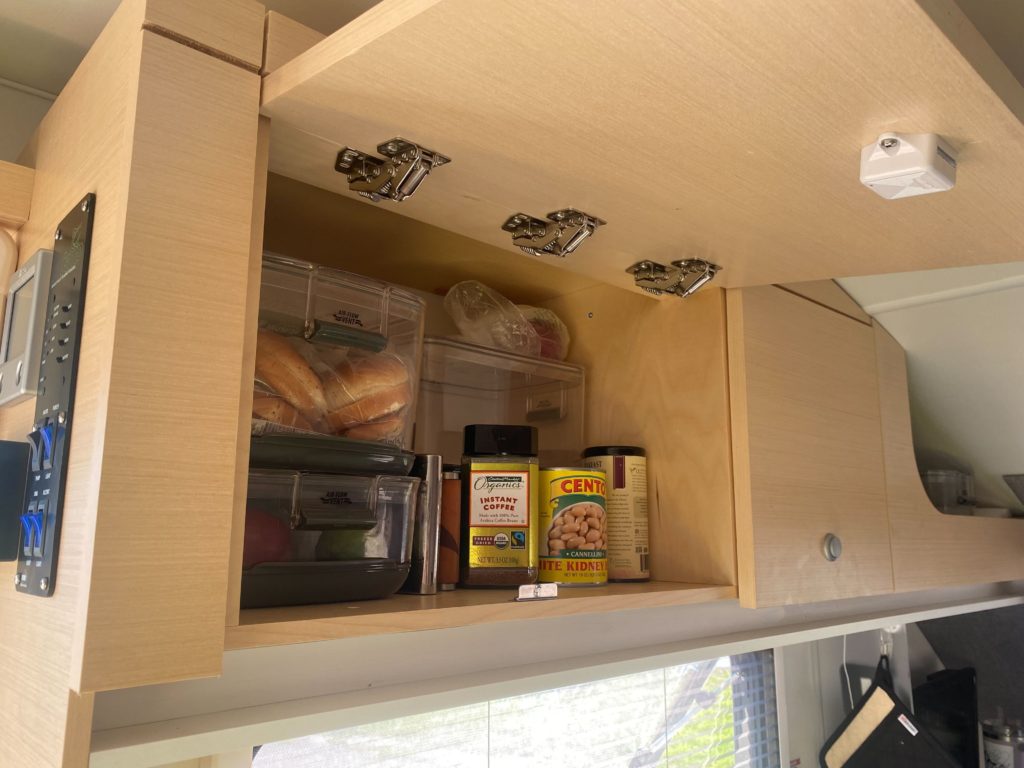
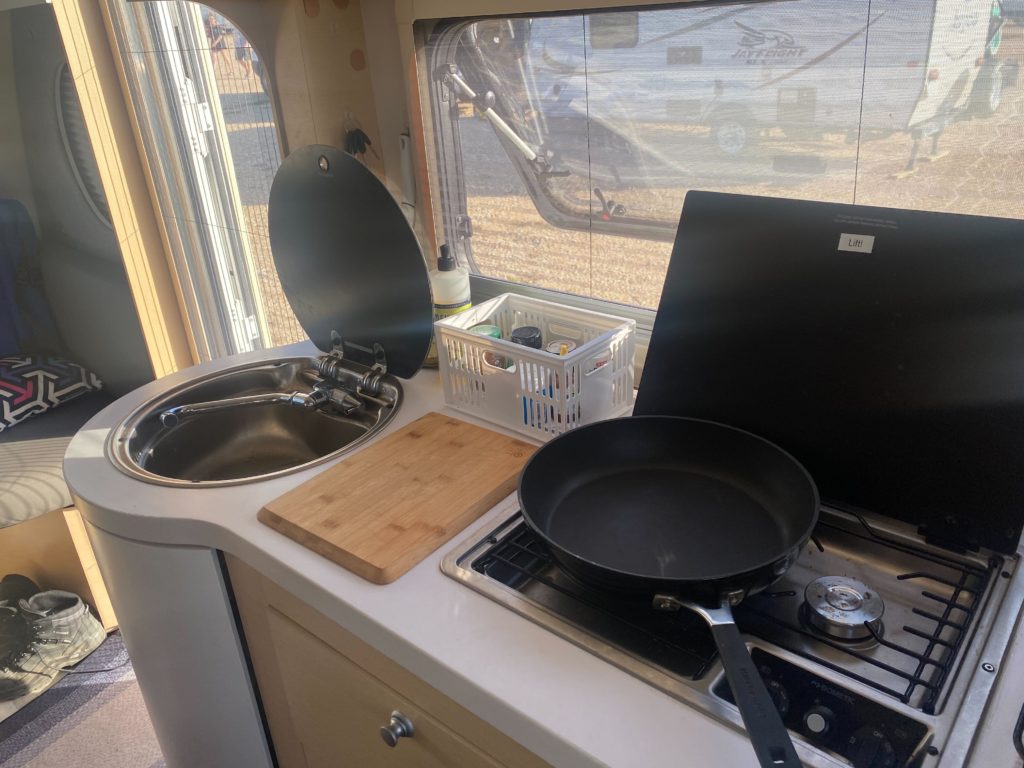
For storage space, we have one upper shelf that is for dry goods, and one upper shelf that is for dishes. One drawer for utensils and towels, and one drawer for pots, pans, cutting board, and serving trays. There is also a little nook for some overflow where I keep an extra dry goods container as well as my kettle and French press.
We learned the hard way that we should be careful about keeping the dry goods in sealable containers. That’s a story for another time, but we do keep almost everything in Tupperware type containers in the dry good shelf.
Meal Planning
I love to cook, but I do have to recognize my limits on what type of meals that I can cook while on the road. No oven, decently limited fridge space (very limited freezer space), and limited counter space. I need to keep meals simpler than I would at home and have recipes that are doable either outdoors on a grill or indoors on the stove. We can’t always reliably cook outside because we have too many fire bans around here.
We rarely get very fancy for breakfast. It’s one of three meals: eggs, granola and yogurt, bagels. Bagels are usually a splurge, so for shorter trips, it’s pretty much 50% egg dishes, 50% granola and yogurt. We used to throw oatmeal in the mix, but both of us found that it didn’t sustain us during hikes. I try to mix it up with egg dishes to pretend I have some variety. Sometimes I do scrambled, sometimes over easy with some bread for soaking up the yolk, sometimes I do avocado toast, and sometimes breakfast tacos.
Lunch is also really straightforward. We pretty much always do turkey sandwiches for Aneel and chickpea salad wraps for me since I’m a pescetarian. We’ve settled on these two because we usually pack lunch to take with us on our hikes. These choices are easy to throw together, easy to pack up, and travel well in our packs.
Dinner is the only meal where I spend any real time cooking. I’ve done a variety of meals from one pot pastas to fish and veggies to soup. But our two favorite meals are hamburgers and sausage foil packets. They’re versatile, easy, and delicious. If possible, we prefer to do both on the grill, but they’re super easy to switch to stovetop, if we have to.
Hamburgers are pretty straightforward. Turkey burgers for Aneel, and veggie patties for me. Whatever condiments I have on hand or am feeling—lettuce, tomato, onion, pickles (always a must), jalapeños, avocado, cheese…
Sausage Packets for the Win
Without a doubt, my favorite camping meal are the sausage foil packets. I’ve played around with different sausage packets and have settled on onions, mushrooms, and asparagus as the veggie winners to go with the sausage. Asparagus I get in the frozen bags because fresh can vary too much and take too long to cook depending on thickness.
Aneel switches up his sausage type (always precooked), but I consistently use Hot Italian Beyond Sausage. For a dressing, I mix avocado oil, horseradish sauce, mustard, herbs, salt and pepper, and maybe a little hot sauce into a little mason jar, then shake it up to mix. For short trips, I might pre-prep the sauce, but we use everything in other cooking stuff, so more often I just mix the sauce up while camping.
If you’re grilling, cut everything to a consistent size, lay out two layers of heavy-duty aluminum foil, put the sausage and veggies on the foil, pour the sauce in, and mix everything up. Seal the foil tight into a packet (I do different sizes/shapes for Aneel’s versus mine, so I can easily tell the two apart), and put them on the grill.
We almost always do a grill on a wood fire pit, but we have done charcoal grills too. Timing really depends on the fire. I usually start with 15 minutes, check, and add time as necessary. Time ranges from 20-40 minutes depending on how hot the fire is and how far away the foil packets are. You want the packets near the flame, but not directly in the flame. Because there is usually wind and fires are capricious sons of bitches, I just adjust the packet positions with tongs on a regular basis.
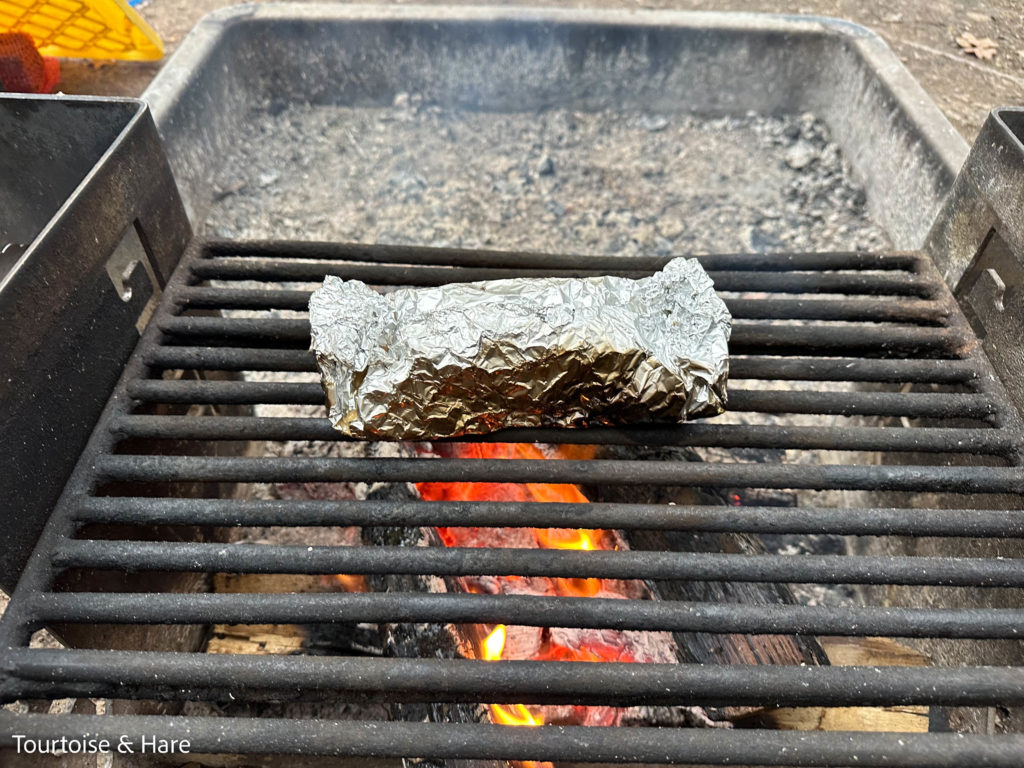
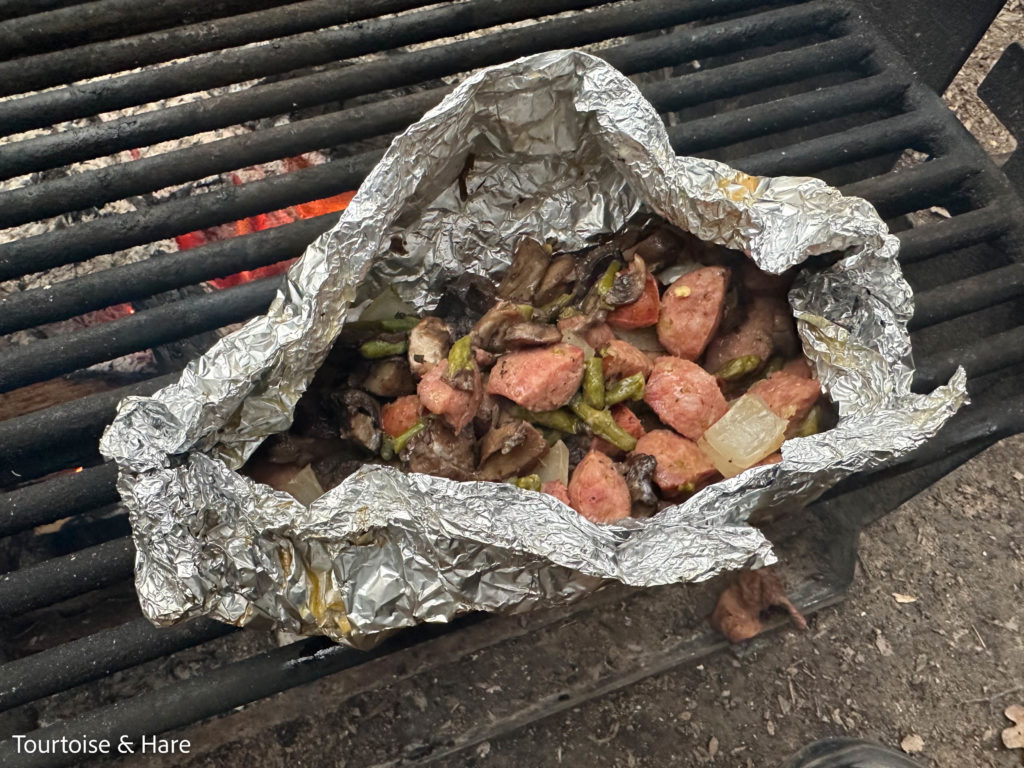
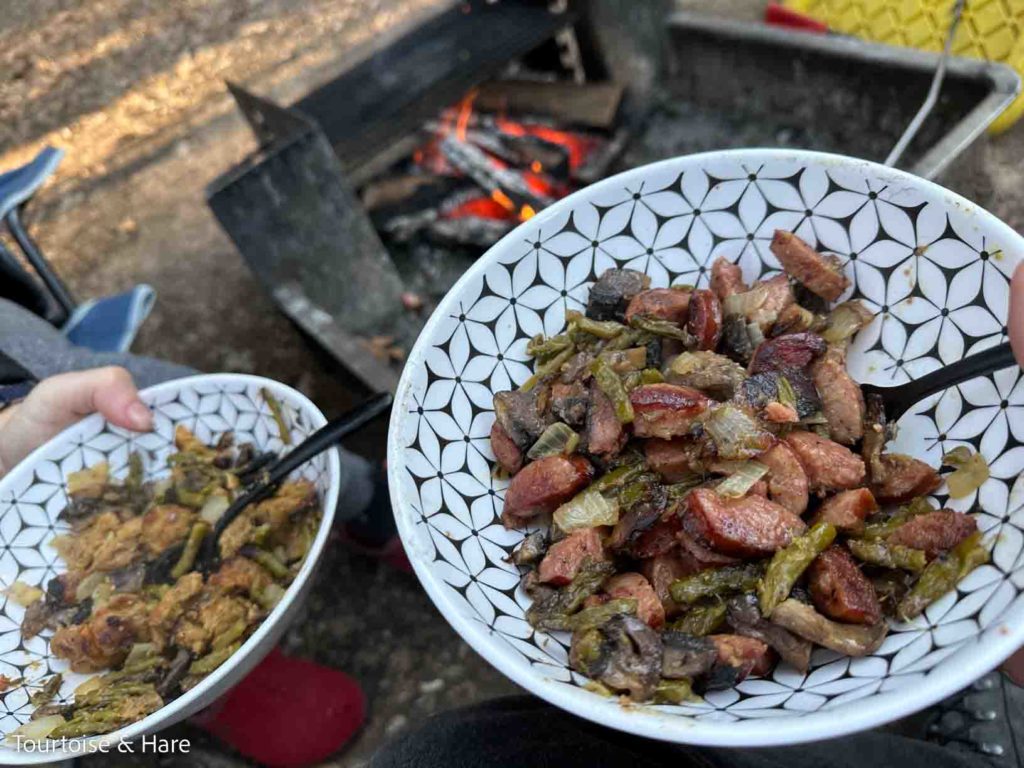
Since the sausages aren’t raw, the best thing to check for doneness is a piece of onion. Once the onion is how you like it, everything else is golden.
If you have to switch to stovetop, everything just gets pan fried in the sauce. It’s not quite as good, but still a solid meal.
You can absolutely mix it up—change protein, change veggies, and change dressing. You want there to be enough oil/fat/liquid, and pick veggies that need somewhat similar cooking times. You don’t want something that only wants 5 minutes and something else that needs a good 45 minutes. Another one I’ll opt for is chorizo/soyrizo with a more Mexican/Tex-Mex dressing option.
Other Kitchen Lessons
I have learned a few other kitchen tips pretty quickly.
- A splatter guard over a pan helps keep the oil contained and my kitchen cleaner.
- Serving trays make it super easy to carry meals out to picnic tables without having to make 4 trips.
- Always keep a towel under dish drying rack.
- Always… like… always always have fans going and vents open when you are cooking in the trailer. I still forget this occasionally, and the fire alarm is a less than pleasant cooking sensory experience.


